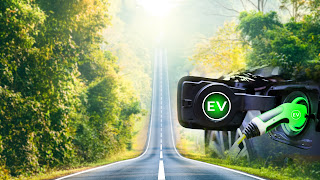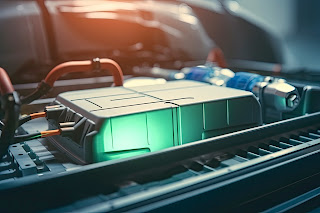Introduction:
The automotive industry is undergoing a paradigm shift as the world transitions towards sustainable mobility solutions. One of the most significant advancements in this domain is the rise of electric vehicles (EVs). In India, where the pursuit of cleaner air and reduced carbon emissions is crucial, the testing and homologation process for EVs play a pivotal role. This blog explores the intricate procedures and standards involved in ensuring the safety, reliability, and performance of electric vehicles in India.
What is Homologation - it refers to all the approvals an automotive manufacturer must attain before they can proceed with marketing and selling the vehicle.
It comprises various stages from component level approval all the way until the complete vehicle compliance.
component - {Motor, battery, Hubs, Controllers, etc }
In short all the components in vehicles should be tested on defined standards in two major institute
1 ] AUTOMATIC REASEARCH [ ARAI ]- The Growing Electric Vehicle Market in India:
India has emerged as one of the world's largest EV markets, driven by the government's ambitious goals and initiatives. With an increasing number of manufacturers and consumers adopting electric mobility, the need for a robust testing and homologation process has become paramount.
- Safety Standards and Regulations:
To ensure the safety of electric vehicles on Indian roads, stringent regulations and safety standards are enforced during the testing and homologation process. These standards encompass various aspects such as crashworthiness, occupant protection, electrical safety, and fire resistance. Testing facilities accredited by the Automotive Research Association of India (ARAI) and the International Center for Automotive Technology (ICAT) are responsible for evaluating vehicles against these regulations.
Vehicle categories -
L1 - Two wheelers with top speed less than 25km/hr or power less than 250watt
L2 - Two wheelers other than L1 category
L3 - Two wheeled motorcycles with speed exceeding 50km/hr
L5m/n - 3W passenger and load carriers (auto-rikshaw)
Quadricycles are defined as L7 followed by passenger vehicle M1 to M3 & commercial & service vehicles N1 to N3
- Performance Evaluation:
Electric vehicles must meet specific performance benchmarks before receiving homologation certification. These evaluations cover areas such as range, acceleration, top speed, energy efficiency, and battery life. Testing agencies employ specialized equipment and conduct tests under controlled conditions to ensure accurate and consistent results.
- Battery Testing and Safety:
Given the critical role of batteries in EVs, rigorous testing protocols are in place to evaluate their performance, reliability, and safety. Battery testing includes assessments of capacity, cycle life, thermal management, and crashworthiness. By adhering to international standards, Indian testing facilities ensure that EV batteries are robust and adhere to the highest safety standards.
- Electromagnetic Compatibility (EMC) Testing:
EMC testing evaluates the electromagnetic emissions and susceptibility of EVs, ensuring they do not interfere with other electronic devices and are not affected by external electromagnetic radiation. Stringent EMC standards are followed to prevent potential interference that could impact the safe operation of the vehicle's electronics.
- Environmental Testing:
In addition to safety and performance evaluations, EVs undergo environmental testing to assess their ability to withstand harsh weather conditions prevalent in India. These tests include assessments of the vehicle's resistance to extreme temperatures, humidity, dust, and water ingress.
- Type Approval and Certification:
Once the EV successfully completes all the necessary tests, it receives type approval and certification. This certification establishes compliance with the Indian homologation regulations and is a prerequisite for the vehicle's commercial launch in the market.
- Ongoing Research and Development:
As electric vehicle technology continues to evolve, research and development efforts in India focus on enhancing testing methodologies, improving safety standards, and refining performance criteria. The aim is to stay ahead of emerging trends and technologies, ensuring that the testing and homologation process remains robust and relevant.
Conclusion:
India's electric vehicle testing and homologation process are pivotal in building a sustainable and safe mobility ecosystem. By adhering to stringent safety and performance standards, EVs are subjected to comprehensive evaluations before they hit the Indian market. With ongoing research and development, the process continues to evolve, keeping pace with the advancements in electric vehicle technology. As India accelerates towards a greener and more sustainable future, the testing and homologation process plays a vital role in fostering trust among consumers and driving the widespread adoption of electric vehicles.












































